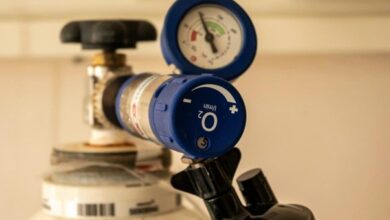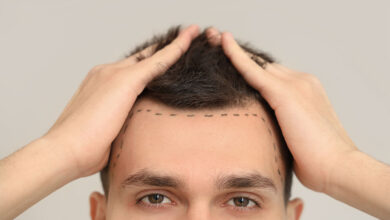Risks and Side Effects of FUT Hair Transplant Surgery
FUT hair transplant surgery is a popular option for those seeking fuller hair. While this method can produce lasting results, it’s important to be aware that it isn’t without possible downsides. Every medical procedure carries risks, and FUT is no exception. If you’re considering this method, keep reading to know what could go wrong and how your body might react.
What Happens After the Surgery?
It’s during the early recovery period that you begin to feel the after-effects of the hair transplant treatment. FUT involves removing a thin strip of skin from the back or side of your scalp to extract follicular units.
Once the strip of scalp is removed and the follicles are transplanted, your scalp needs time to heal. This stage is crucial and often comes with mild to moderate discomfort, including tightness around the donor area.
Scarring and Long-Term Visibility
One of the most common risks associated with FUT is linear scarring. Because the technique removes a strip of skin, a scar usually remains. The visibility of this scar depends on how well your scalp heals and how you wear your hair. For example, short hairstyles may reveal the scar more easily than longer ones.
Keloid scars, which are thicker and raised, may develop in rare cases. These are more likely in people who already have a tendency to scar this way. Those with darker skin tones are sometimes more prone to keloid scarring, so it’s something to discuss with your doctor.
Risk of Infection
While infection is rare, it’s still a risk with any surgery. Poor hygiene after surgery or touching the area too much increases this risk. Clinics usually provide an antibiotic course to reduce the chances of infection, but following post-op care instructions is key.
It’s also important to ensure that your clinic follows strict hygiene standards. Choosing a registered and well-reviewed clinic improves your chances of a smooth recovery.
Shock Loss and Uneven Growth
Shock loss is when the existing hair around the transplant area falls out after the surgery. This can be alarming, but in many cases, the hair grows back within a few months. Some people experience patchy or uneven regrowth, especially in the early months.
This stage requires patience and realistic expectations. Not everyone will see perfect symmetry right away. A second procedure may be needed to improve coverage or density.
Numbness and Sensitivity
Some patients report numbness around the donor or recipient area. This happens when nerves are disturbed during surgery. While most regain full feeling within a few weeks or months, others may have permanent, slight numbness.
It usually doesn’t interfere with daily life, but should still be noted during your consultation. Your surgeon should explain what type of nerve sensation changes could occur based on your specific case.
Swelling and Discomfort in the Days After
It’s not unusual to experience swelling around your forehead and eyes in the days after the procedure. The fluid used during surgery to lift the skin can travel downwards, leading to puffiness or bruising. This usually resolves within three to five days.
You may also feel tightness or soreness in the donor area, especially as the stitches start to heal. Over-the-counter pain relief can usually manage these symptoms, though your surgeon may give you specific medication.
Sleeping with your head elevated for the first few nights can help reduce swelling and keep you more comfortable. You’ll also be advised to avoid bending over, heavy lifting, or intense workouts until your scalp settles.
Itching and Scab Formation
As the scalp heals, it will likely start to itch. This is completely normal and a sign that new skin is forming. However, scratching can dislodge the grafts or irritate the scar, so it’s best to resist the urge.
Scabs will also begin to form at both the donor and recipient sites. These usually fall off naturally within a week or two. Avoid picking them, as this can affect healing and lead to poor graft survival or minor infections.
Using a gentle saline spray or post-op mist can help keep the area moisturised and ease itching. Make sure to use only what the clinic recommends.
The Importance of Choosing the Right Clinic
While FUT has proven results, the level of care you receive before, during, and after the procedure can affect your outcome dramatically. Not all clinics offer the same quality of service.
Research thoroughly and don’t be swayed by the lowest price. Look for clinics that have strong reviews, before-and-after galleries, and clear post-op guidance. An honest consultation should explain both the benefits and possible drawbacks, giving you time to ask questions.
A Word On Expectations
It’s easy to imagine an instant transformation, but FUT results take time. Your new hair may not appear for three to four months and often doesn’t show its full effect until nine months or later. Patience is part of the journey.
There will be an adjustment period where your hair might look worse before it gets better. Understanding this ahead of time can help you manage your emotions and avoid panic if progress seems slow.
Conclusion
FUT can deliver impressive, long-lasting results for the right candidate. But it’s not a one-size-fits-all solution. Knowing the possible side effects helps you make an informed decision and prepares you for what’s ahead.
Speak openly with your clinic, weigh your options, and give yourself time to consider. When done properly and with the right guidance, FUT can be a worthwhile investment not just in appearance but in confidence as well.



